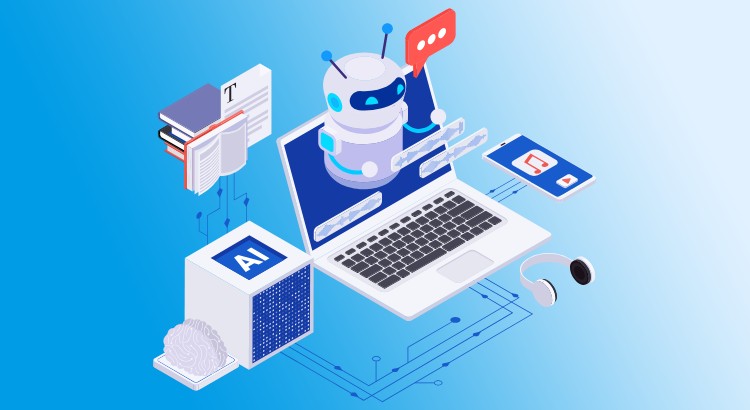Website owners might wonder, is AI generated content good for SEO when trying to scale their publishing efforts without compromising performance. The use of AI in SEO introduced new opportunities like generating content, creating article structures, and speeding up keyword research. This article explores the pros and cons of using AI-generated content for website performance and search visibility.
What is AI-Generated Content?
AI-generated content is any form of text, image, or video created by artificial intelligence tools. These tools, like ChatGPT or other large language models, generate material based on data patterns, prompts, and machine learning. In content marketing, this usually means things like blog posts, product descriptions, ads, or meta tags written mostly by a tool instead of a person.
Instead of writing everything from the beginning, you can give the tool a prompt and get a quick draft. This makes it easier to produce more content in less time. But without human editing, the content may miss the quality needed to fully engage readers or rank well in SERPs.
Can AI-Generated Content Hurt My Search Ranking?
AI-generated content will not harm your search ranking if it is helpful, original, and created with the reader in mind. Google focuses on the quality of the content, not how it is produced. Content that demonstrates E-E-A-T — expertise, experience, authoritativeness, and trustworthiness — can rank well regardless of whether it was written by a person or AI.
Google’s systems reward pages that offer trustworthy, high-quality information. What matters most is that the content is useful and meets a high standard of quality. If AI content follows these principles and serves the audience, it can perform well in SERPs.
On the other hand, publishing large amounts of low-quality or shallow AI content can hurt your ranking. Content that feels robotic, lacks depth, or is created just to rank may cause problems. To avoid this, always review and improve AI-generated content before publishing.
How Does AI Affect Content Performance?
The influence of AI on content performance isn’t uniform. For some, it helps create ideas faster and produces content more consistently. Others notice higher bounce rates or lower engagement due to flat, repetitive phrasing that lacks emotional connection.
Performance metrics like click-through rates (CTR) and time-on-page often improve when human editors refine AI output. For example, AI can suggest multiple headline options, and marketers can choose or tweak the one that resonates most. But content still needs a strategic voice and alignment with business goals to perform well.
The Limitations of AI-Generated Content for SEO
AI tools are powerful, but they come with clear limitations:
Lack of unique insight
AI can repeat facts and information it has learned, but it does not have personal experiences or real opinions. This means it cannot create truly original ideas or add a fresh perspective that only humans can provide.
Over-reliance leads to sameness
When many people use the same AI tools, the content produced often follows similar patterns. This can make articles feel generic and predictable, which makes it harder for your site to stand out from the competition.
Shallow topic coverage
AI tends to cover topics at a surface level without exploring deeper details or new angles. Without a human to guide the research and add insight, content can miss important points or emerging trends that matter to readers.
SEO shortcuts may backfire
Relying on automatically generated content packed with keywords might give a quick boost, but search engines are getting better at detecting low-quality, keyword-stuffed pages. This can eventually harm your rankings instead of helping them.
Ultimately, search engines aim to reward content made for real people, not just for algorithms. Using AI without careful oversight risks missing what your audience truly needs and expects.
5 Tips for Using AI-Generated Content
1. Use AI for drafting, not publishing
AI can help you get started by generating article outlines or rough drafts, but it should not be the final step. Human input is needed to add real examples, original thinking, and a clear message. Editing improves structure, tone, and depth, turning a basic draft into content that feels genuine and useful.
2. Optimize with intent in mind
AI tools can suggest keywords and build article frameworks, but SEO success depends on understanding what the reader is truly looking for. Focus on answering real questions and solving problems. Blend AI suggestions with your knowledge of the topic to create content that matches search intent, not just search terms.
3. Pair AI with performance tools
Using AI doesn’t end with publishing. You need to monitor how the content performs using tools like Google Analytics. Look at metrics such as time on page, bounce rate, and click-through rate. These insights help you understand what’s working and where human edits are still needed.
4. Refresh and repurpose, don’t flood
Avoid the urge to publish large amounts of AI-written content. Instead, use AI to update older articles, turn blog posts into emails or infographics, or adjust content for different audiences. This keeps your site active without hurting quality or causing repetition.
5. Keep a human editor in the loop
Even the most advanced AI cannot fully match the judgment of a skilled content writer. Always check for clarity, accuracy, tone, and brand alignment. Editors ensure that the final content meets your goals and builds trust with your audience. AI helps with the process, but people make the final version better.
Conclusion
Whether AI generated content is good for SEO depends on how you use it in your workflow. AI can help you create content faster and at scale, but it still needs human editing to make it clear and useful. But quality, clarity, and relevance must still come from human input.


